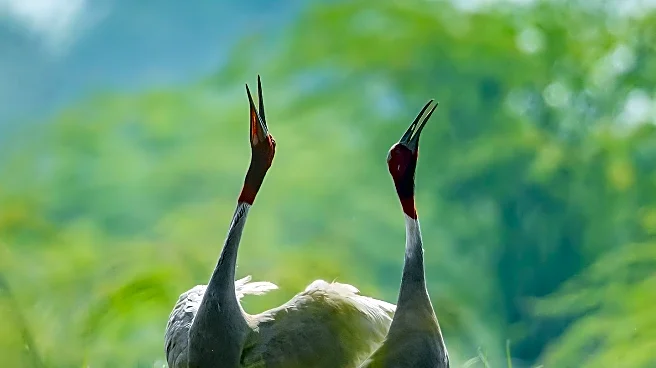What is the story about?
What's Happening?
A young sandhill crane was struck by a car at a busy intersection in Sarasota, Florida, raising concerns about wildlife safety in areas with heavy traffic. The nonprofit organization Save Our Seabirds (SOS) intervened to rescue and rehabilitate the injured bird. The team at SOS, which specializes in rescuing and rehabilitating sick and injured birds, devised a care plan to minimize human contact, crucial for the crane's successful return to the wild. They introduced the crane to a resident surrogate crane named Lady, who helped guide the young bird through recovery. After weeks of care, including the use of a custom splint, the crane was reunited with its parents, marking a successful rehabilitation effort.
Why It's Important?
The incident highlights the importance of wildlife conservation efforts and the role of organizations like Save Our Seabirds in protecting threatened species. Florida sandhill cranes are a threatened subspecies, with fewer than 5,000 remaining. The successful rescue and rehabilitation of the crane underscore the need for public awareness and action to protect wildlife, particularly in areas where human activity poses a threat. By slowing down and staying alert on roads, drivers can help prevent accidents that endanger wildlife, contributing to the preservation of native species and biodiversity.
What's Next?
Save Our Seabirds continues to advocate for wildlife protection and encourages the public to drive cautiously to prevent further incidents. The organization remains committed to rescuing and rehabilitating injured birds, aiming to increase public awareness about the importance of wildlife conservation. Future efforts may include community outreach and educational programs to promote safe driving practices and wildlife protection.
Beyond the Headlines
The successful rehabilitation of the sandhill crane also highlights the ethical responsibility humans have towards wildlife conservation. It raises awareness about the impact of urban development on natural habitats and the need for sustainable practices that protect wildlife. The story serves as a reminder of the delicate balance between human activity and wildlife preservation, encouraging a cultural shift towards greater environmental stewardship.
AI Generated Content
Do you find this article useful?

















